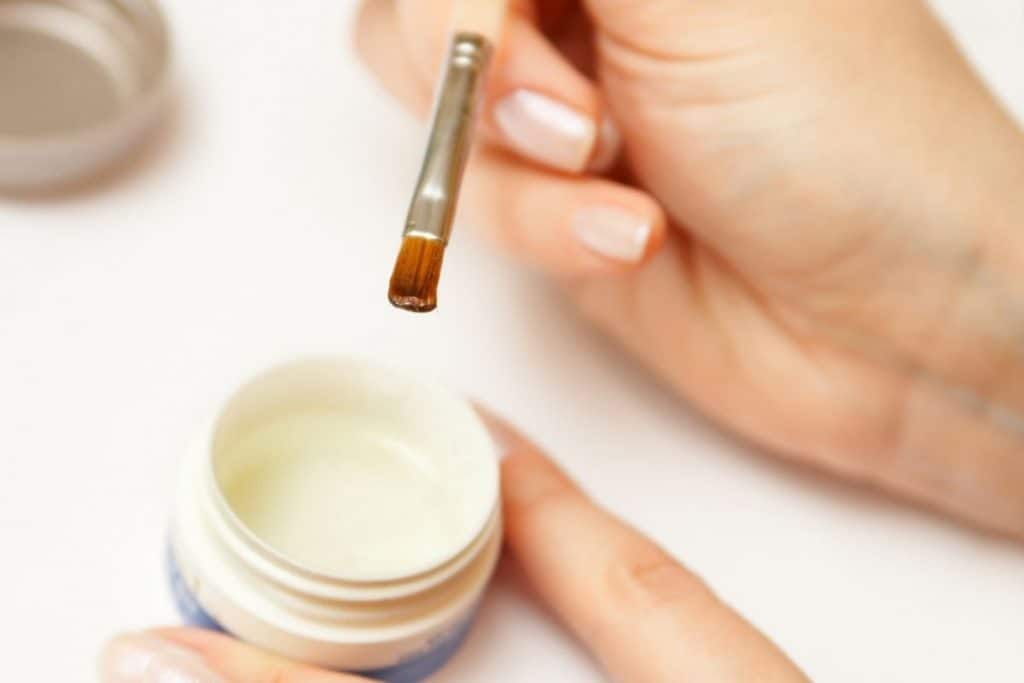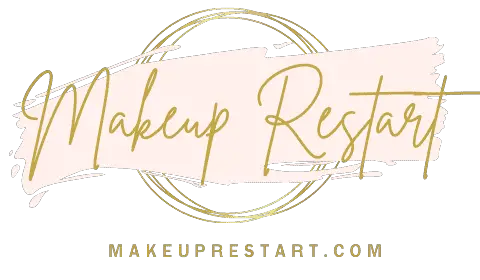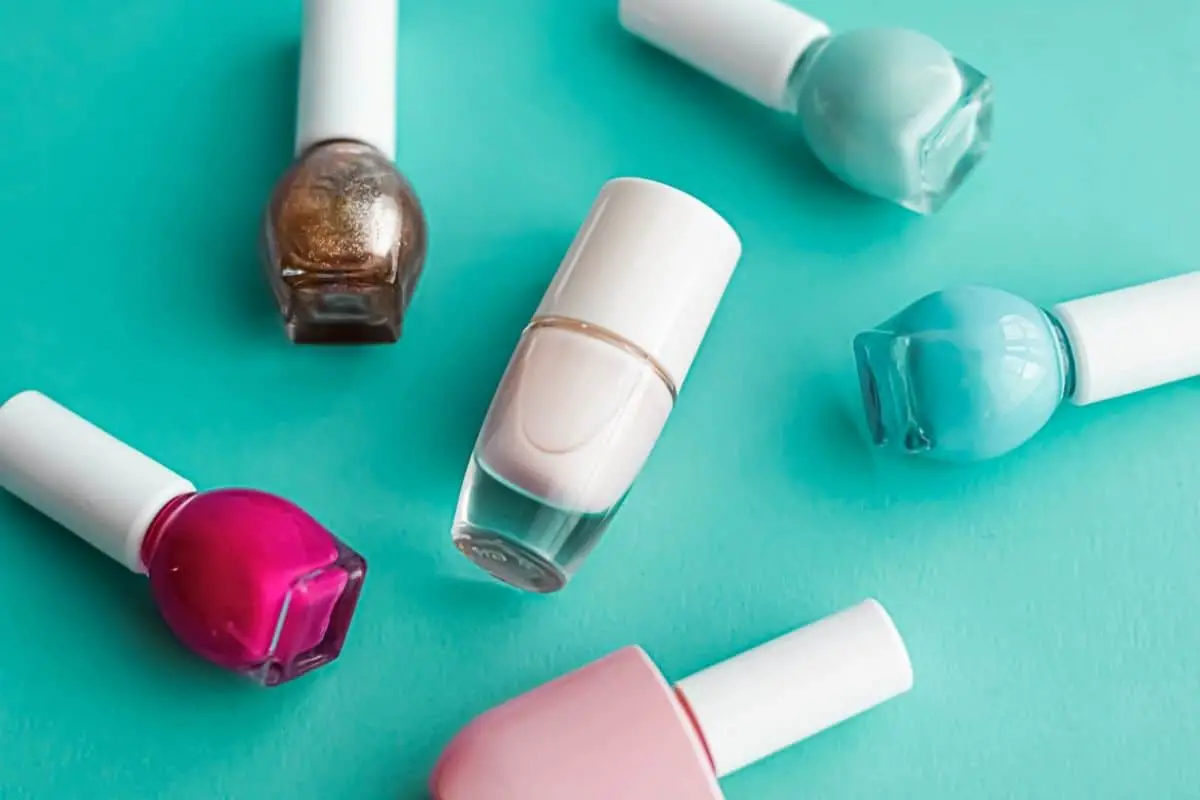This post contains affiliate links.
Breaking ground in building your nail polish empire is not a walk in the park. When you think you are ready to start, you will realize you don’t even know where to start. They say there is enough space in the sky for every star to shine in it. Grab yours and build that empire. I know what is in your mind! But how do I start my own nail polish brand?
With the well-established nail polish brands ruling the market space, starting your brand is not going to be easy. Gather all the data you need to build a nail polish empire from a scratch. Once, you’ve mastered the marketplace and the consumers, secure funds to set your project in motion.
It gets better if you already have funds at your disposal. However, if you don’t have any capital for your business, that should not be a reason to shelve your brilliant vision. These days it is easier to secure loans and financiers if you have an airtight business proposal.
Tangible knowledge on the industry you are trying to claw your way into is the epicenter of it all. Get formal training if you must. Especially if you are green in the nail polish industry. Here is a step-by-step guide on how to build your nail polish empire from the ground. Even if you don’t have a lot in your account. Keep scrolling down the page to get enlightened.
Table of Contents
How Do I Start My Own Nail Polish Brand?

If you are a sharp business-minded person, breaking out into the nail polish arena shouldn’t sound like rocket science. Yes, it is not easy, but you need courage and wits. Be a firm believer in karma marketing. Establish an airtight customer base even long before you break the ground.
1. Identify Your Motivation
Of all the million businesses you could start, why nail polish? What is the catch? Identify and give a name to that small voice that is pushing you so hard to grow a profitable company. It could be a sheer passion for nail beauty, or it could be a story that makes you want to bring change to the nail industry.
Once you have identified your motivation, everything else shall fall into place. You have the drive. You will be able to have a tangible business model. With motivation, you will be able to draw the vision and mission of your empire.
2. Have Knowledge of the Industry
You can’t say you are making bread when you have absolutely no idea of what a loaf of bread is. Familiarize yourself in the nail polish industry. Don’t go blind. Have all the market statistics and compare and contrast all the popular brands. Try to identify the loopholes in the product and capitalize on them.
For example, most nail polish brands cannot afford to go organic as they ought to. If you have surveyed the consumers, you will realize that most if not all of them prefer 100% percent organic products.
3. Curve a Niche
There is a thin thread that differentiates nail polish brands in the market today. Pick an area of specialization and focus on it. For example, if you decide to produce organic nail polish brands, go organic 100%.
As your brand grows, let your products grow too. You can start by introducing 100% vegan products and when the time comes, when you are at the top, you can comfortably handle as many products as possible. Start small but make it big.
4. Know Your Competitors
Business is not a place you walk into blindfolded. Knowing the popular brands and your competitors will give you leverage for strategizing. Gather information on their production, niche, raw materials, sourcing, and whatever data you can lay your hands on.
Knowing your competitors in knowing the market. Once you have solid information on what makes them, you can use that to model a unique brand. Do an in-depth economic analysis to determine how much capital you will need to start.
5. Know the Consumers
You are not producing products to consume them yourself. You need to know the market. The market is the people who are willing to buy your products because they love them. If they are buying them because they are affordable, you will be out of business in no time.
Study your customer base and know what they need. If they love organic, produce 100% organic nail polish. Don’t claim 100% organic when you know it is only 80%. Integrity and trust are the keys when it comes to consumers.
6. Develop Formal Business Plan
Once you have gathered sufficient information to draw a model for your business, a good business plan is the next big thing. This is what will give you access to funds for capital. Whether you are approaching individuals or banks and lending institutions to finance your business, you need to have a well-developed formal business plan.
Some of the things you must highlight in your business proposal include the business objectives, product information, and marketing strategy. You will also need a sound financial outline because this is the key to securing capital.
7. Detailed Cost Analysis
There are so many factors to put into consideration before starting your nail polish brand. If you are going all the way from manufacturing to selling, you need thorough research. You also need a detailed cost analysis to ensure that every need is met.
List down all the requirements against the amount of money you will need to spend on each. It also depends on whether you are going small, medium, or large scale. All the same, you will still need to develop a detailed cost plan analysis. Otherwise, you will risk hanging off-balance without funds.
8. Know Threats and Challenges
In the business world, there are prone to be threats and challenges. In plenty. Studying the market and gathering information from potential competitors is a sure way to understand how to deal with and overcome any arising threats and challenges.
Already existing brands have leverage over your brand. That is one huge challenge. You have to claw your way to earn a place in the market. You must be willing to take a proactive approach to gain and maintain relevance otherwise you will be out in the streets before you know it. You need to survive every threat and challenge because you did not start to casually die in an alley.
9. Get Legal Documents
No one wants to have their business foreclosed before they even begin. You have put in a lot of money, time, and knowledge to come this far. All you need is progress no matter how small it is. Getting legal documents isn’t hard and neither is it expensive. It will protect your brand and give you all the rights to be in the market.
If you are strapped for money and time, make a point to get the basic legal documents. You will acquire the rest as your business grows. Some of the documents you need to launch your nail polish brands include but are not limited to; Business license, permit, seller’s ID, Business plan, DBA, NDA among others.
10. Invest Your Time and Money
Starting a brand is not just about pumping in money. It requires a lot more. You will need to invest a lot of time too if you must see that smooth take-off. If you are setting a brand as a side hustle, that might not work. You will be forced to shelve all other commitments and give them a priority.
Starting a brand is so demanding. It is like having a new baby. Ensure that you have enough capital for expenditures and outsourcing. If you don’t have enough at your disposal, you might need to approach financiers and banks to help you step up the ladder.
11. Handpick Your Suppliers
Starting a brand is mostly about building long-term relationships. If you are outsourcing the raw materials, you need suppliers who can have a long-term relationship with you. However, if you are lucky enough, you can be doing supplies for your own brand. Which is much more beneficial and trustworthy.
When you are outsourcing for supplies, start by experimenting and testing them to see if they meet your standards of operation. If they do, you can proceed to make orders in large quantities. Test the pigments and other ingredients for quality and durability.
12. Outsource Your Manpower
You can’t do everything alone. You need help. If you are starting all the way from manufacturing, you need to consider the health of your employees. Manufacturing nail polish involves very dangerous compounds that are very harmful to human health. It can cause terminal illnesses and that will all be on you as an employer.
Ensure that your nail polish brand reaches the accepted standard in the country of operation. Even if you are starting as a small-scale entity, consider insuring your employees. Give them unlimited health insurance and other insurances that are necessary for such businesses.
13. Packaging and Logo
Image is everything and anything. You need to give your nail polish brand a face. A face that can attract, sell and satisfy. Let your logo speak for your brand and your packing impress your existing and potential customers and consumers.
Packaging and logo can easily be created. It doesn’t take a lot of time to prepare a business plan. All the same, you need to make them professional and convincing. If you can’t do it yourself, there are many branding companies out there that can gladly do good work for you.
14. Protect Your Business Entity
Business is a man-eat-man game and you need to be well-positioned and armed. You might be lucky enough to come up with a nail polish formulation that no other brand has ever used before. That is your hard work and sweat that you need to protect with everything within you.
Being unique is what distinguishes your brand. If you are lucky to come up with a unique formulation, you need to patent it. Now all about copyrights, patents, trademarks among other important key features. This is the only sure way to protect your intellectual property.
15. Choose a Physical Business Location
Positioning should come into your mind. Position your brand in a location where there are potential customers and consumers. Just the same way as you can’t build a garage near a school. You need it close to highly populated residential areas.
First, decide on your target customers. For example, if you are creating a nail polish suitable for housewives and teenagers, ensure that you position your business in the suburban district. If you build up in an industrial area, you will be competing with motor vehicle parts and no one will notice you. Move your business uptown close to high-end salons.
16. Put Your Brand Out There
What you have been doing all along is internal. Now you need to break out and expose your brand to the world. You need to position them where they can be seen and can attract potential customers. You can call it a marketing strategy.
Start by befriending established brands in the same industry as you. They will give you both a pivot to climb up and the exposure that you so much need at this stage. Networking should become your second name. Turn every conversation into a platform to talk about your brand. Have a loud social media presence and be creative while at it.
17. Launch Your Product
Don’t expect too much from your new brand. Just like an airplane, your brand needs a runway to taxi before that ultimate take-off. Give it that space. Don’t expect boom sales at least for the first year. Expect a flat curve for months and sometimes, don’t be alarmed if there is a nose-diving.
But every material is cut out differently. Don’t be shocked if your brand takes off almost immediately. Officially launching your product is the ultimate determinant of the direction your brand will take before finally soaring high. Make the best out of the launch and leave the brand to take its ultimate course.
Basic Components You Need to Make Nail Polish
Depending on the brand, there is an endless list of ingredients for making nail polish. The raw materials required are solely dependent on what your brand will release into the market. If you are looking at producing organic nail polish over the regular, you need to familiarize yourself with the right raw materials. Here is a list of the basic ingredients for all nail polish production.

1. Nitrocellulose
This is one of the key ingredients in the production of most nail polish. Nitrocellulose is a combination of liquid and invisible cotton fibers. This raw material is available in various viscosities. It all depends on the density of the end product you want to achieve.
This raw material is extremely flammable and explosive, and you might need to be a little bit careful. It is one of the by-products of making dynamites. It is used in nail polish manufacture as a film-forming agent.
2. Synthetic Resins and Plasticizers
This is an additive meant to improve the flexibility of your nail polish. It is mostly used with other natural materials to increase the efficiency and viscosity of your nail polish. Depending on the end-product you want to achieve, choose the right natural raw material that works well with these two ingredients.
Most if not all resins need complimentary raw materials to meet the standard specifications for production. Some of the components of these two ingredients include castor oil, amyl, and butyl stearate. There are also glycerol, fatty, and acetic acids.
3. Dyes and Pigments
You will need one or more solvents to contain your dyes and pigments. For nail polish to function well, the solvents must be able to evaporate as soon as the bottle is opened. The good part about solvents is their dual function. They can also act as plasticizers.
For a quality color nail polish, ensure that you always ensure that your solvents make your colorings flexible and with a smooth consistency. Consult with the FDA list to identify the pigments that are restricted before you start outsourcing colorings and production.
4. Adhesive Polymers
Adhesive polymers are responsible for your nail polish adhering to the beds of your nails and staying put for days. Just as pigments and solvents are vital parts of excellent nail polish, adhesive polymers are a must. Otherwise, your nail polish will behave like spilling water on your nails that cannot hold.
This raw material requires various modifiers to be effective and adhesive. One of the modifiers includes tosylamide. This modifier is formed from a reaction with formaldehyde. This soft resin material is what is responsible for the tough shiny part of your nail polish.
5. Thickening Agent
You see those sparkling particles suspended inside your little nail polish? This thickening agent is 100% responsible for that. It is mostly stearalkonium hectorite. The components found in nail polish are simple and interesting.
Thickening agents exist in dual forms. The solution is viscous when still and they can easily be used because of their flexibility. On the other hand, when they are shaken or agitated, they are free-flowing. This explains why they freely stick to the application brush. This feature is convenient, especially when applying your nail polish.
6. Ultraviolet Stabilizers
In other words, this is your nail polish sunscreen that protects the polish pigment. It is formulated to protect your color from changing especially when exposed to sunlight. Most colors are prone to weaken, fade or change when they are exposed especially to sunlight.
Benzophenone is the most popular ultraviolet stabilizer used by most nail polish brands. Besides preventing photodegradation, it keeps your nail polish fresh with deep healthy coloring. It works by absorbing and screening out ultraviolet radiation.
4 Popular Types of Nail Polish
Every brand has a formula for its nail polish. However, some raw materials used are universal regardless of the type of nail polish you are producing. Here is an exposition of nail polishing that is designed to work together for perfect nail polish.
1. Base Coat
This is the first and very important layer that goes into your nail beds during a manicure. It is designed to act as both a protective and adhesive agent. It also acts as a strengthener to keep your nails from being weak and brittle especially when color nail polish is added.
Nail polish mostly comes in clear and nude colors. However, there are colored ones available in the market. The base coat improves the longevity of your nail polish and also prevents unnecessary staining. Other base coats act as fillers. If you have ridges on your nail beds, this coat comes in handy.
2. Top Coat
This is yet another clear protective formulation for your nails. It is the last layer to be applied to your nails during a manicure. It has a shiny and smooth consistency that keeps your nails fresh and new. This viscous consistency is easy to apply and has excellent coverage.
The topcoat is designed to form a hard barrier for the color polish in your nails. It prevents chipping and dullness of the polish. It also protects against unnecessary scratching and peeling especially within one week of application. Most brands label this polish as quick-drying and a gloss.
3. Gel Coat
This nail polish is a by-product of methacrylate polymer. This color nail polish is designed to shade your nail beds as the regular color nail polish. However, it does not dry naturally as the color nail polish. You will need a UV/LED lamp for the polish to cure sufficiently. Too much LED/UV exposure is not good for your nails and the surrounding skin.
Gel nail polish can last you for over two weeks when well-tended. They come in a variety of attractive colors to choose from. This nail polish cannot be traditionally removed like your regular alcohol nail polish. It requires acetone soaking which can also be harmful if regularly used.
4. Regular Nail Polish
Also famously known as nail varnish, this polish is the most common and accessible in the nail industry. It has been around longer than any other nail polishes. This polish comes in a variety of attractive colors to choose from. However, its tone, viscosity, and quality depend on a particular brand.
Just as they are easy to apply at home, they are also very easy to remove. All you need is alcohol-based removers which are less harmless as compared to acetone. These polishes are also more affordable and easier to manage. On the flip side, regular nail polishes are not as lasting as gel nail polish.
5. Matte
This is yet another regular nail polish only that it has a coarse finish. Matte nail polishes are intentionally created to be dull to give a variation for the glossy look. This nail polish is painted over a dry base coat for maximum and perfect results.
These polishes come in a variety of attractive colors to choose from. They are easy to apply even at home. Just like regular nail polish, they are best removed with alcohol-based removers. They can last up to seven days without chipping or lifting off.
6. Shellac
Even though this is a brand of its own, different companies and brands are now steadily adopting the formula. This nail polish is a blend of regular nail polish and traditional gel. This means that its performance stands in between the gel and the regular nail polish effect.
Shellac nail polish comes in a variety of excellent colors to choose from. They are best applied and removed by nail technicians. They also require a UV/LED lamp to cure. Unlike regular nail polish, this formulation will last you for days. They also require a strong remover like acetone because of the gel element in it.
How Much Does It Cost to Start a Nail Polish Brand?
The amount of capital you need to start your nail polish brand is relative. It mostly depends on the size of the brand and whether you are going small, medium, and large scale. Before determining the cost of starting a nail polish brand, there are a lot of requirements to introduce to the equation.
While I can’t estimate the amount of capital you will, it is always flexible to work with what you have at your disposal. Make a detailed cost analysis against the projected capital before committing to size for your brand.
Conclusion
Starting a nail polish brand is not as hard as it is made out to be. As long as you have proper planning and good market research, it shouldn’t be as tough as building an aircraft from scratch. Always make a point to consult with financial experts and seasoned reputable brands to garner a spot in the market.
Sources
- Profitableventure.com: How to Start a Nail Polish Line Successfully in 24 Steps
- Nailsmag: How to Start Your Own Polish Line
MakeupRestart.com is a participant in the Amazon Services LLC Associates Program, an affiliate advertising program designed to provide a means for sites to earn advertising fees by advertising and linking to Amazon.com. We also participate in other affiliate programs which compensate us for referring traffic.






Leave a Reply